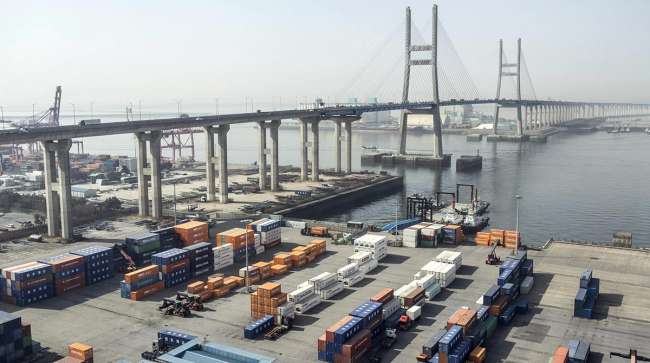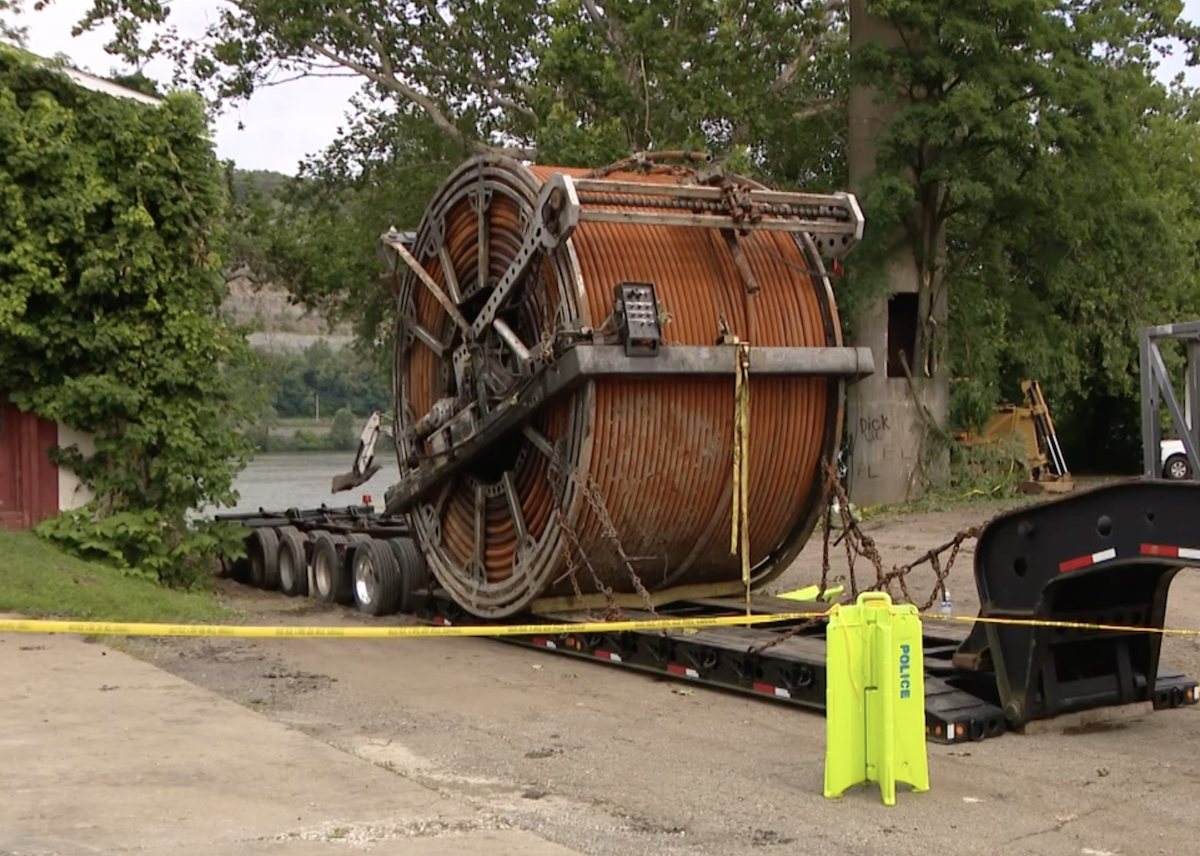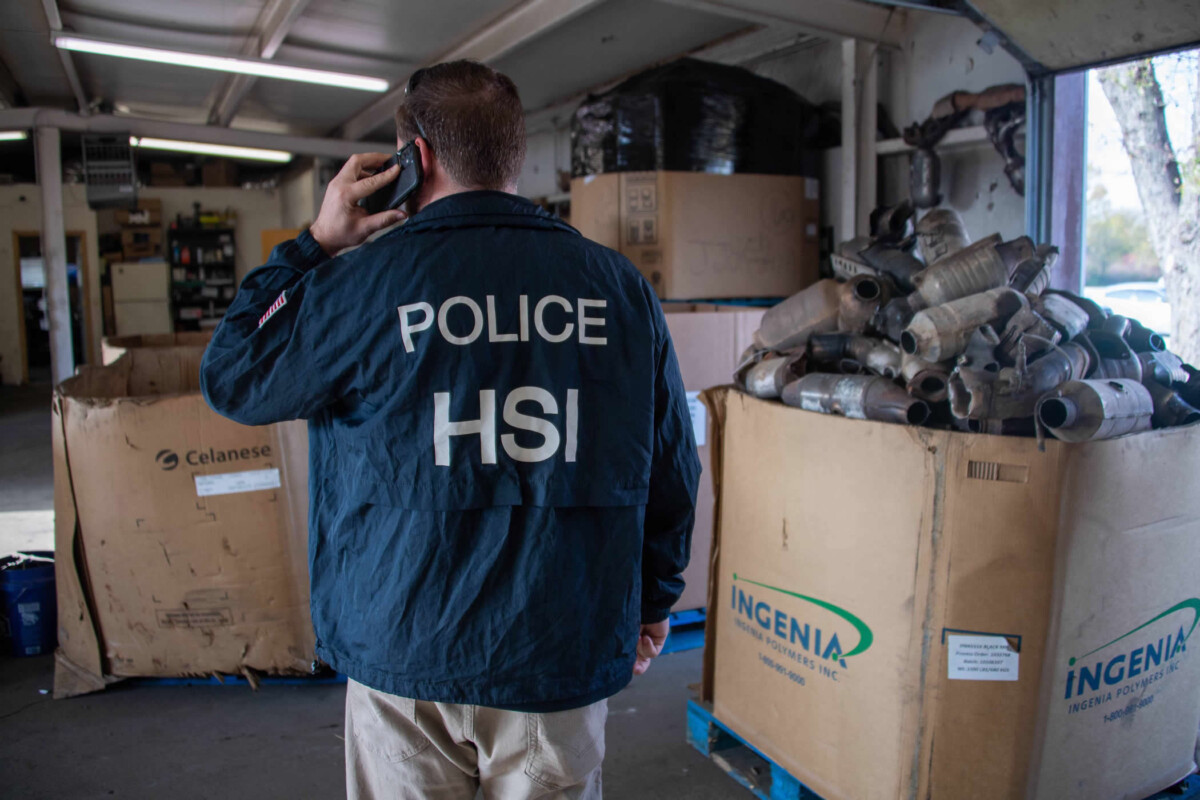Shipping containers at the Port of Pyeongtaek in Pyeongtaek, South Korea. (Jean Chung/Bloomberg)
President Donald Trump spent the final hours before his sweeping tariffs were set for full implementation lining up negotiations with key U.S. allies, but hopes for striking a last-minute deal with China appeared distant.
Trump on April 8 heralded planned trade talks as markets rebounded on optimism that he would reduce or eliminate higher tariffs on dozens of nations. The president said prospects for a trade deal with South Korea were “looking good” after a phone conversation with acting President Han Duck-soo, while other Asian and European leaders announced shuttle diplomacy with the White House.
“We have the confines and probability of a great DEAL for both countries,” Trump posted on social media about the South Korea talks. “Their top TEAM is on a plane heading to the U.S., and things are looking good. We are likewise dealing with many other countries, all of whom want to make a deal with the United States.”
Trump said he would negotiate with nations on issues beyond trade and tariffs, making for a “beautiful and efficient process.”
President Trump just had a great call with the Acting President of South Korea: pic.twitter.com/FUlsgWQUxy
— Karoline Leavitt (@PressSec) April 8, 2025
Still, the specter of crippling levies on Chinese imports loomed large, with Beijing signaling it would not back down from a trade war. Trump said he was waiting for a call from Chinese officials, and accused them of mishandling the situation.
Trump is planning to proceed with implementing tariffs that would amount to 104% on many Chinese goods just after midnight, according to a White House official. That package includes previous levies applied because of the fentanyl crisis, his reciprocal tariffs, as well as an additional retaliation Trump announced after Beijing said it would tax U.S. exports to China.
“China also wants to make a deal, badly, but they don’t know how to get it started. We are waiting for their call. It will happen!” the president said.
China has been defiant in the face of Trump’s tariff hike, threatening to go ahead with retaliatory duties on American goods. Trump has vowed to slap China with an additional 50% duty if Beijing does not back down, on top of his previously announced reciprocal levy. The standoff makes it hard to envision Chinese President Xi Jinping rushing to contact his U.S. counterpart for immediate relief.
“Trade and tariff wars have no winners, and protectionism leads nowhere. We Chinese are not troublemakers, but we will not flinch when trouble comes our way. Intimidation, threat and blackmail are not the right way to engage with China,” said a spokesperson for the Chinese Foreign Ministry.
Trump’s higher duties on roughly 60 trading partners that he dubbed the “worst offenders” are set to take effect after midnight April 8, including levies of 25% on imports from South Korea and at least 34% on Chinese goods.
.@USTradeRep Jamieson Greer: “Unfortunately, China for many years seems to be choosing its own path on market access. Again, they have agency in this. They elected to announce retaliation. Other countries did not. Other countries signaled that they’d like to find a path forward… pic.twitter.com/RtyxlOS8Wz
— CSPAN (@cspan) April 8, 2025
U.S. Trade Representative Jamieson Greer said at a congressional hearing April 8 that Trump’s tariffs will be “going into effect” and “we’re coupling that with immediate negotiations with our partners.”
“If you have a better idea to achieve reciprocity and to get our trade deficit down, we want to talk to you. We want to negotiate with you. And it goes both ways,” Greer said.
The U.S. president said he spoke with the South Korean leader “about their tremendous and unsustainable Surplus, Tariffs, Shipbuilding” and “large scale purchase” of U.S. liquid natural gas. He also discussed “their joint venture in an Alaska Pipeline, and payment for the big time Military Protection we provide to South Korea.”
Treasury Secretary Scott Bessent said earlier that “Japan is going to get priority” in a long line of nations looking to persuade Trump to roll back his so-called reciprocal duties, praising Tokyo for holding off on retaliating against the U.S. following Trump’s tariff announcement. Trump and Japanese Prime Minister Shigeru Ishiba held an April 7 call to set up talks, with the Japanese leader urging the president to rethink his approach.
White House National Economic Council Director Kevin Hassett said Trump had given clear direction to his team to sequence talks with friendly nations ahead of others seeking a deal.
“The president will decide when and if to talk with China, but right now, we’ve received the instruction to prioritize our allies and our trading partners like Japan and Korea,” Hassett said in an interview with Fox News.
Italian Prime Minister Giorgia Meloni is also expected to travel to the U.S. to negotiate tariff relief directly with Trump.
Trump has sent conflicting signals about his willingness to consider exemptions for nations seeking relief from his import taxes.
He has praised trading partners for coming forward to make concessions, but also brushed aside some offers, including an offer from Israeli Prime Minister Benjamin Netanyahu made in the Oval Office to bring down barriers and erase a trade surplus with the U.S. Trump has also dismissed the idea of a blanket pause before the tariffs go into place.
Navarro is truly a moron. What he says here is demonstrably false.
— Elon Musk (@elonmusk) April 8, 2025
“There can be permanent tariffs and there can also be negotiations, because there are things that we need beyond tariffs,” Trump told reporters on April 7.
And some of Trump’s top aides have publicly split over the tariff regime. Elon Musk, Trump’s billionaire adviser, has criticized the announcement and on April 8 said trade counselor Peter Navarro was “truly a moron” in a post on X.






